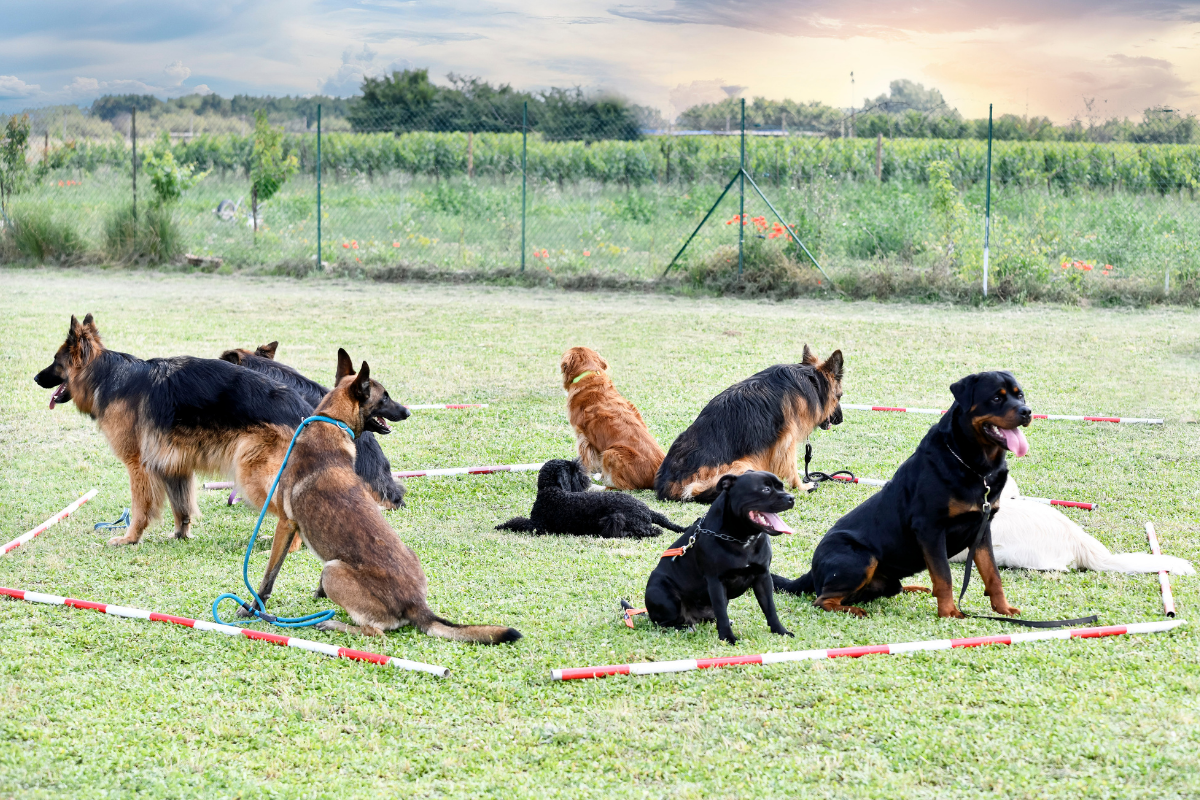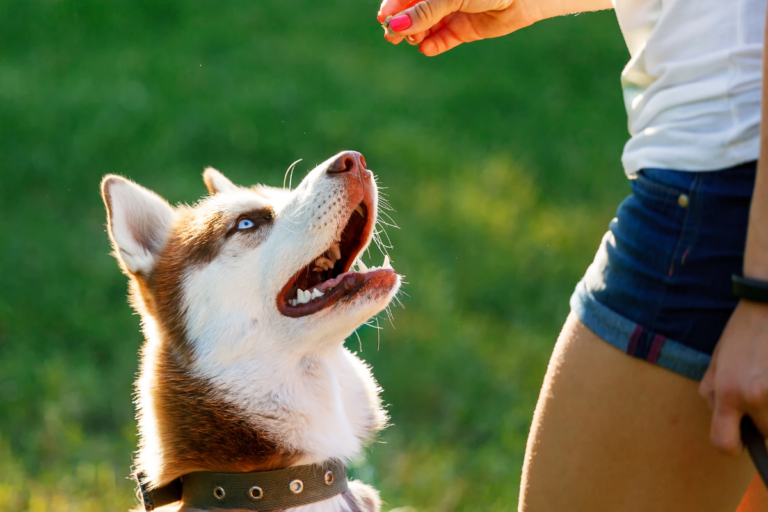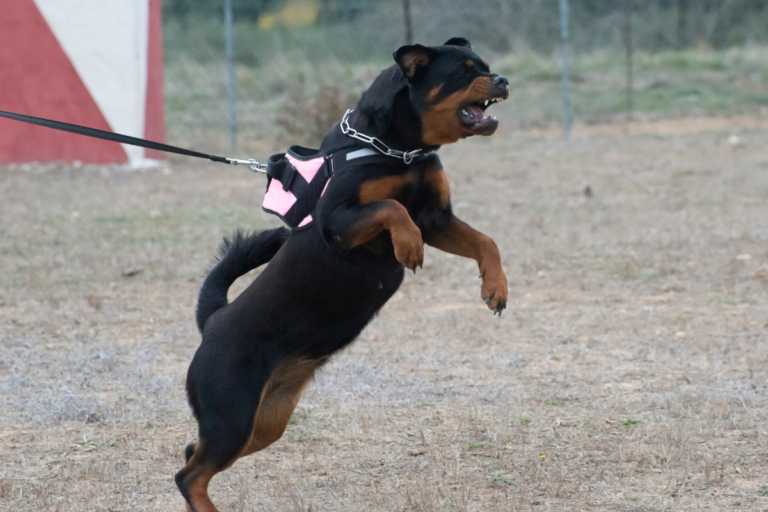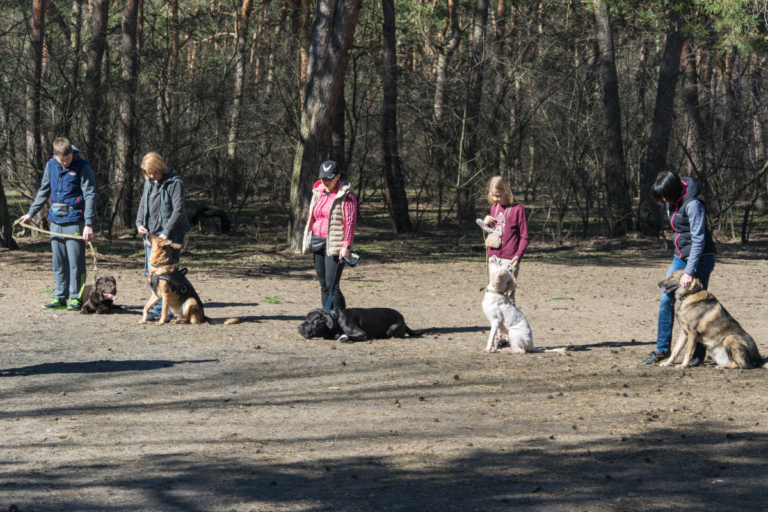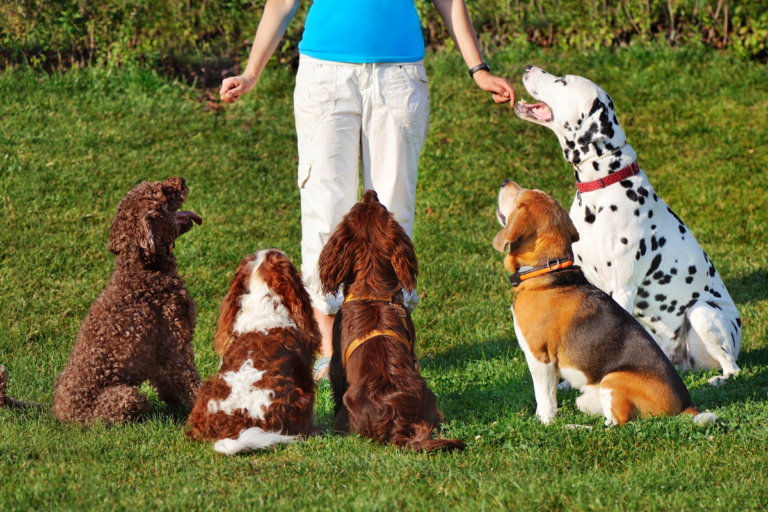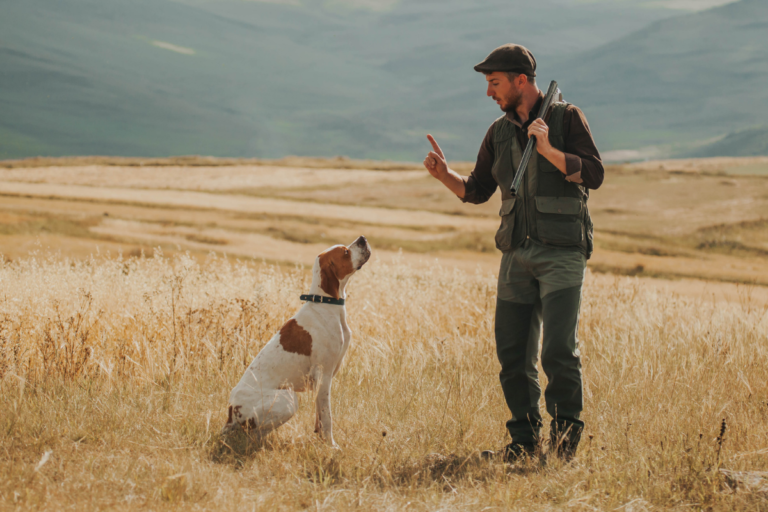Mighty Mutts: Fostering our Focused Group of Dogs
Understanding Dog Training
Training our four-legged pals is like teaching them to speak a bit of our language. It keeps them safe, lets us chill, and makes our bond with them even tighter.
Importance of Training Dogs
Why bother training our pups? Well, it makes us and them a great team. Training teaches them the ropes, gets them used to following our lead, and keeps the lines of communication open—no more barking just to say, “Hey, I’m hungry!”
Plus, trained dogs are way less likely to skip into traffic like they’re chasing an Oscar. Basic commands like “sit” and “stay” become lifesavers in those “what the woof?” moments. And let’s not forget, our trained buddies are less whiny at dog school or when meeting new furry pals in the park playground.
Finally, sorting out behavioral quirks like being too bitey or hyper can often come down to rewards. Instead of scolding them for barking at the mailman, giving them a treat when they sit quietly is a win-win. Most vets, including the smart folks at Small Door Vet, think this is the way to go for happy, learning pups.
Factors Influencing Training Success
If we want to really nail this training gig, there are a few secrets hidden up our sleeves we gotta spill.
-
Consistency: Puppers dig it when we’re on the ball. Sending the same signals over time helps them catch on faster. Short and sweet sessions, around five minutes, work best, says the American Kennel Club (Small Door Vet).
-
Repetition: Dogs can be real selective listeners sometimes. Running through commands in different spots and with a little chaos around helps them get it, no matter where they are (Small Door Vet).
-
Patience: Rome wasn’t built in a day, and neither is a perfectly trained pooch. Celebrating the little wins—like when they actually come when called once in a blue moon—keeps the progress rolling (Small Door Vet).
-
Professional Help: If our pups are shaking their heads at us, get the pros involved. Trainers have all the tricks up their sleeves to help with special challenges, and puppy school can totally help (Small Door Vet).
For us dog lovers, getting the lowdown on training and knowing what makes it stick can really up our game. Whether it’s a little happy-go-lucky fluffball or a macho working dog, tweaking the training to fit their groove makes all the difference. Let’s dive into specialized training designed for cool cat—or should I say, cool dog—breeds like k9 dogs or gun dogs, to cater to their quirks and choices.
Lifespan & Weight Impact on Training
Our dog’s lifespan and weight aren’t just numbers—they affect how we train them. Let’s chat about how these factors shape things for our pooches.
Lifespan of Different Breeds
Knowing how long different breeds might stick around helps us set up the right training game plan. Dogs hanging out in the UK usually live between 10 and 13 years; that’s like being 60 to 74 in human years.
| Dog Size | Average Lifespan (Years) |
|---|---|
| Small Breeds | 10 – 15 (maybe even 18) |
| Medium Breeds | 10 – 13 |
| Large Breeds | 8 – 12 |
Data provided by The Conversation
Guess what? Small guys often stick around longer than the big fellas. This makes little fuzzballs more appealing if you’re in it for the long haul. Training a k9 dog isn’t like working with a teeny Maltese—one’s got heaps of energy while the other’s more laid-back, partly ’cause of lifespan differences.
Plus, if we get how old our dogs will be, we can tweak our training as they grow up. While younger pups may need to learn the ropes and make friends, older ones might enjoy more chill activities that keep those wheels turning upstairs.
Role of Weight in Training Success
How much our dogs weigh? That’s a biggie for training. Close to 34% of grown-up dogs in the U.S. are carryin’ some extra baggage. Big dogs face more health hiccups like joint issues, diabetes, and weak hearts, and they might bow out 2 years sooner than their fit buddies (American Kennel Club).
| Weight Status | Health Impact |
|---|---|
| Healthy Weight | Longer Lifespan, Energy to Burn |
| Overweight/Obese | Cut Short by 2 Years, Health Issues Galore |
Keeping our pups svelte makes ’em spry and raring to go when it’s time to work on those tricks. A gun dog, for instance, needs to stay sharp and lithe to nail those tasks.
Want Fido to keep trim? Mix in some weight-watching habits: good grub, plenty of play, and maybe some dog training classes that match each group’s mojo.
Tying in lifespan and weight smarts means we can craft training plans that match what each pooch needs, helping ’em shine while staying in top-notch health.
For more deets on handling behaviors like dog aggression, peep our take on aggressive dog training. And if your dog tends to lose it fast, check out our scoop on reactive dog training.
Groupings & Training Approaches
When it comes to dog training, knowing what makes each breed tick can work wonders. Dogs are fascinating creatures with rich histories and specific traits, and understanding these can lead to better training methods.
Using What Makes Each Breed Special
Every dog group has its own personality and skillset. Let’s take advantage of these and customize training for each group to fit like a glove.
Toy Group:
Toy dogs are the pocket-sized companions of the dog world. Perfect for apartment living, they shine when they get enough socialization and obedience lessons. Think of these training sessions as a fun way for them to play well with both people and other pups. These little guys might be small, but they can pack a punch when it comes to cuteness overload!
Working Group:
Working dogs are like the superheroes of the canine universe – strong and smart, with specific jobs to do, like guarding or searching. When training working dogs, it’s all about beefing up their obedience skills and honing in on the tasks they’ve been bred for, like those agile K9 units we see in action.
Sporting Group:
These are your outdoor adventure buddies. Hunting is in their blood, and they love nothing more than retrieving and following scents. Training programs that dive into their hunting instincts can make a huge difference.
Hound Group:
Hounds come in two flavors: those that hunt by scent and those by sight. Their noses and eyes are top-notch at tracking, so training should involve exercises that indulge these keen senses, sort of like taking them on a safari adventure in your own backyard.
Herding Group:
Always on the move, herding dogs can turn a bunch of sheep into a marching band. Engage both their body and brain with herding drills and obstacle courses to sharpen their skills.
Tailoring Training for Specific Groups
Let’s break down how we can get these rockstars trained based on their unique traits.
| Group | Characteristics | Training Emphasis |
|---|---|---|
| Toy | Small, great for city life | Social skills, Basic commands |
| Working | Muscle on legs, smart cookies | Enhanced obedience, Job-specific abilities |
| Sporting | Nature’s hunting companions | Fetch games, Sniff and find |
| Hound | Either sniffers or sight-seekers | Scent hunts, Visual trails |
| Herding | Ranch hands at heart | Mock herding, Speed and skill courses |
Toy Group Training
Our little Toy friends need interaction, and lots of it! Teaching them basics like “sit” and “stay” gives them a leg up in becoming the best buddies ever.
Working Group Training
Working dogs mean business. Tailoring training to reflect their work keeps them sharp, with a mix of challenges to test their strength and smarts.
Sporting Group Training
Here, you’re aiming to make training feel like a fun outing. Trials that simulate hunting keep them alert and ready to rock their retrieving game.
Hound Group Training
These dogs benefit from tailor-made trails that test their amazing senses. Switching up the exercises makes sure they stay on their toes – or paws, really.
Herding Group Training
Who doesn’t love a good obstacle course? Herding dogs get to relearn their roots through activities designed to refine their natural knack for leading the charge.
By paying attention to each group’s natural talents, our training programs ensure that every dog not only learns well but also has the most fun possible. They end up happier, better-behaved pooches – a win-win! For more on easy-to-train breeds, check out what else we’ve got for ya.
Handling Dominance Behavior
Identifying Dominance Aggression
Alright, let’s get real about dominance behavior in dogs. We’re talking those bossy behaviors some pups like to throw our way. It’s like a power play within their little doggie society. The way this shows up can be all over the map, influenced by things like their quirky personalities, age, whether they’re male or female, their breed, and the vibes in their environment. Spotting these actions early on keeps the peace between us and our furry pals. Here’s a look-see at what dominance aggression might look like:
- Climbing on everything that moves (or doesn’t)
- Over-the-top licking
- Needy behaviors that scream, “Give me, give me!”
- Always wanting to grub
Now, our pups can also display different types of aggression. You got the dominance kind, which is about who’s who in the dog’s social pecking order, and the territorial one, where they’re guarding their turf or toys. Knowing these makes life a whole lot easier when sorting through behaviors.
Addressing Dominance Early
Let’s nip these dominance traits in the bud. When our pups are little, they might seem like sweethearts, but bam! All it takes is a trigger, and they’re strutting around like they own the place. Socialization is key to keeping things smooth. Here’s the game plan to deal with it early on:
- Exercise: Tire them out. A good run or play session means less energy for acting like a canine Napoleon.
- Training: Check out some dog training classes. A few sessions and our dogs learn who’s boss. Plus, it cuts back on them trying to pull rank.
- Socialization: Show them the world. Meeting new folks and critters helps them get the hang of respecting ranks—hopefully cutting back on the need to be top dog all the time.
- Consistency: Keep the rules steady. They need to know what’s cool and what’s a no-go. Flip-flopping messages only confuses our pups and might make them pushier.
If aggressive behavior’s a real head-scratcher, it could be time for some expert backup with aggressive dog training. Tackling things head-on means a happier home for everyone—us and the pooches.
Need more? Have a gander at our resources on wrangling a reactive dog or scoop some puppy training tips. We’ve got the goods to help every step of the way!
